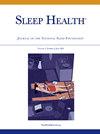Demographic differences in drowsy driving frequency and beliefs among a nationally representative US sample: A brief report from the National Sleep Foundation
IF 3.4
2区 医学
Q2 CLINICAL NEUROLOGY
引用次数: 0
Abstract
Objectives
Drowsy driving accounts for a significant proportion of motor vehicle injuries and is a preventable form of impaired driving. There is a limited body of research documenting demographic differences in the frequency and beliefs regarding drowsy driving.
Methods
The National Sleep Foundation conducted a national online survey of 1012 adults. Participants answered questions about the frequency of drowsy driving and about their beliefs surrounding drowsy driving.
Results
About 16% of drivers endorsed driving drowsy at least once a year. Demographic differences in drowsy driving beliefs were observed. Generally, individuals from historically underserved groups reported a higher frequency of drowsy driving than other drowsy drivers.
Conclusions
Drowsy driving might be a sleep health equity issue, and social determinants of health may impact an individual’s likelihood of driving drowsy. Future studies are needed to investigate sociocultural factors that could influence drowsy driving behaviors so public health campaigns can be appropriately tailored.
求助全文
约1分钟内获得全文
求助全文
来源期刊

Sleep Health
CLINICAL NEUROLOGY-
CiteScore
6.30
自引率
9.80%
发文量
114
审稿时长
54 days
期刊介绍:
Sleep Health Journal of the National Sleep Foundation is a multidisciplinary journal that explores sleep''s role in population health and elucidates the social science perspective on sleep and health. Aligned with the National Sleep Foundation''s global authoritative, evidence-based voice for sleep health, the journal serves as the foremost publication for manuscripts that advance the sleep health of all members of society.The scope of the journal extends across diverse sleep-related fields, including anthropology, education, health services research, human development, international health, law, mental health, nursing, nutrition, psychology, public health, public policy, fatigue management, transportation, social work, and sociology. The journal welcomes original research articles, review articles, brief reports, special articles, letters to the editor, editorials, and commentaries.
 求助内容:
求助内容: 应助结果提醒方式:
应助结果提醒方式:


